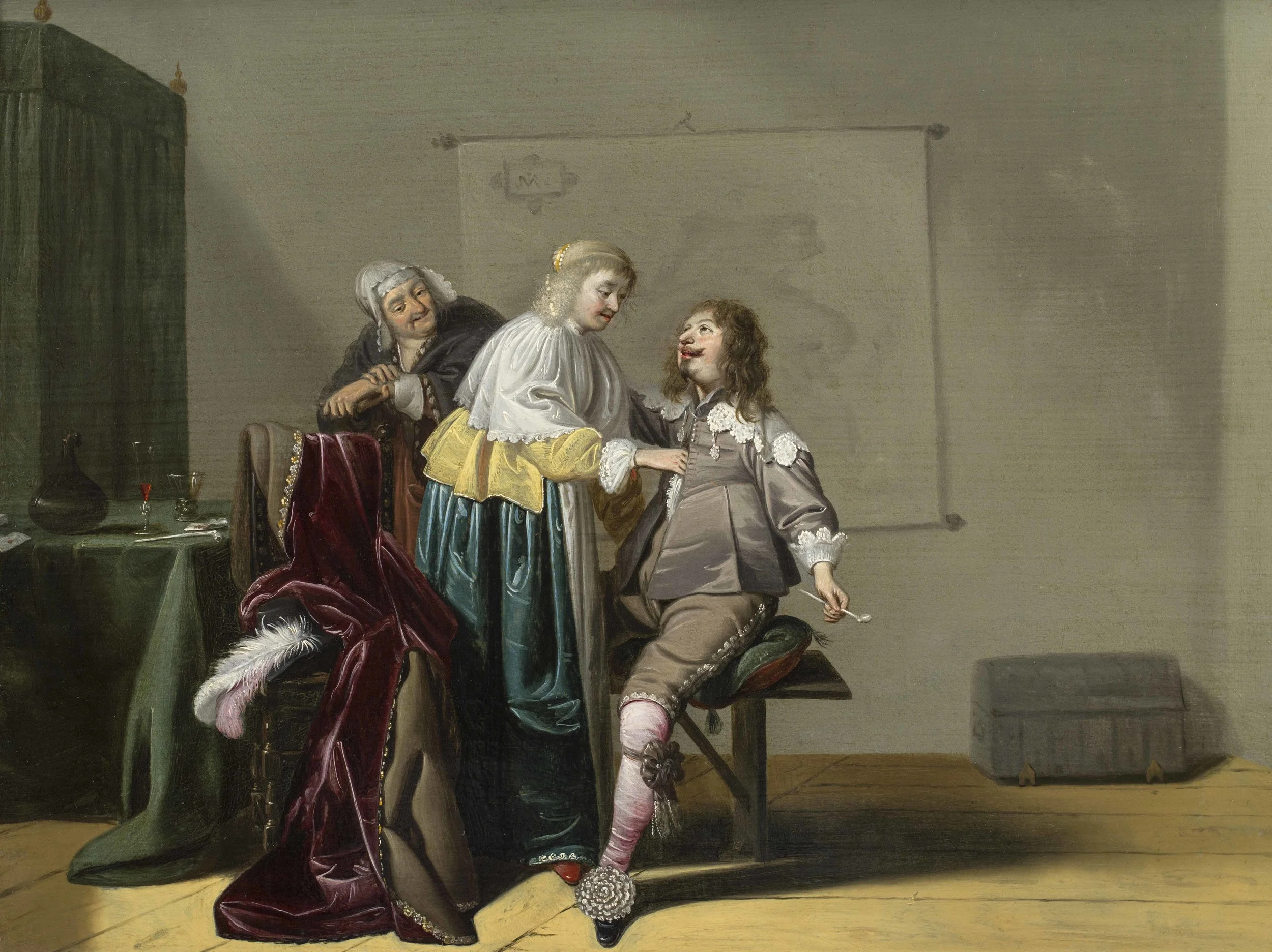JACOB FRANSZ VAN DER MERCK ('s-Gravendeel c. 1610 – Leiden 1664)
Indulgence in Worldly Pleasures
signed in monogram IVM on the map
oil on panel
15 ¾ x 21 1/16 inches (39.5 x 53.5 cm)
Jacob van der Merck was a painter of portraits, still lifes and genre. It is believed he began his training in Delft from 1628 until 1631. He left Delft in 1631 and is recorded as a member of the Saint Luke’s Guild in The Hague in 1636 until 1640. From 1640 – 1649 he was a member of the guild in Dordrecht, and then returned to the Hague in 1649. There he married Geertruyt Jacobsdr. Schaaphuijsen from Dordrecht. In 1658 Merck moved to Leiden where he remained for the rest of his life. [1]
His genre scenes were influenced by those of Anthonie Palamedesz, Pieter Codde, and Pieter Quast. His subjects include musical parties, dances, conversation pieces and soldiers in guard-rooms. [2] His figures are typically elegantly attired. Our work, aptly titled Indulgence in Worldly Pleasures, is set in a brothel. A young cavalier dressed in satin, silk and lace is deep in his cups. His shoe rose of white lace is exquisite. His velvet cloak and plumed hat have been casually tossed on an adjoining chair. A young prostitute, in satin and lace, smiles down at him while fleecing his pockets. The procuress looks on approvingly. The underlying message is clearly stated. Indulging in such worldly pleasures as drinking, smoking, gambling and promiscuity will surely not end well. Yet in Merck’s deft hands the sinning almost looks worth the ultimate pain.
Merck’s paintings formed part of the permanent collections in the museums of Amsterdam, Berlin, Boston, Haarlem, The Hague, Kiev, Leiden, Oldenburg, and Utrecht.
[1] Biographical information taken from Adriaan van der Willigen & Fred G. Meijer, “Jacob van der Merck” in A Dictionary of Dutch and Flemish Still-Life Painters Working in Oils 1525 – 1725, Primavera Press, Leiden, 2003, p. 141; and in “Jacob van der Merck” on rkd.nl (RKD Explore) website.
[2] Walther Bernt, “Jacob van der Merck” in The Netherlandish Painters of the Seventeenth Century, Volume Two, Phaidon, New York, 1970, p. 77.
